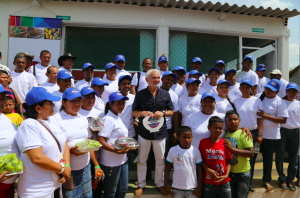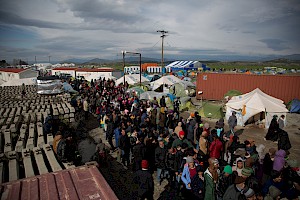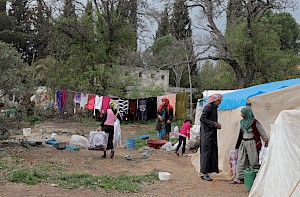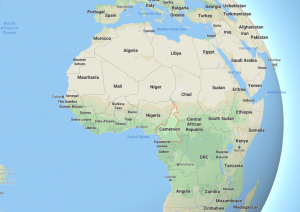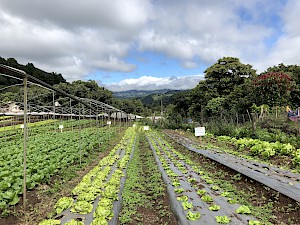A philanthropist’s solution to helping economic refugees from the Northern Triangle
June 21, 2022Originally published in The Toronto Star on June 7, 2022 as contributing columnist
Do you ever wonder why migrants embark on what are often perilous journeys, leaving everything behind, to an uncertain future in the U.S. or other developed countries?
We hear a lot about conflict refugees escaping wars from the likes of Syria, Afghanistan or more recently, Ukraine. Their primary objective is more than clear: Staying alive. But we also hear about so-called “economic” or “irregular” refugees, who are often maligned by populist politicians, portrayed as criminals and job-stealing parasites.
Irregular immigration has been a hot political topic in the U.S. these past few years and has made for a lazy but effective narrative for the more unscrupulous political candidates. But upon closer look, we would find that the underlying reasons for this endemic problem are more complex, and only when the reasons are better understood can a solution be designed.
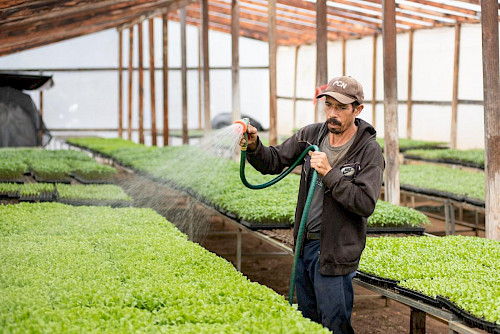 I was recently in El Salvador as part of my annual visit to the programs created by Acceso, a philanthropic organization I founded in 2007. Acceso is revolutionizing food systems in Latin America and the Caribbean and lifting tens of thousands of smallholder farmers out of poverty. We have 2,500 farmers in our El Salvador network and it’s our goal to increase that number to 30,000 in the next five years, and to expand our social enterprises to neighbouring Guatemala and Honduras — what is often referred to as the “Northern Triangle.”
I was recently in El Salvador as part of my annual visit to the programs created by Acceso, a philanthropic organization I founded in 2007. Acceso is revolutionizing food systems in Latin America and the Caribbean and lifting tens of thousands of smallholder farmers out of poverty. We have 2,500 farmers in our El Salvador network and it’s our goal to increase that number to 30,000 in the next five years, and to expand our social enterprises to neighbouring Guatemala and Honduras — what is often referred to as the “Northern Triangle.”
Since 2014 we have proven our model, having increased farmer incomes by 250 per cent. Additionally, we have created many jobs (thanks to the infrastructure we built) in processing facilities and fish hatcheries. Acceso does not take a view on U.S. immigration policy, nor are we guided in our work by American interests but rather the more fundamental goal of poverty alleviation. And our experience in El Salvador demonstrates that there is in fact a solution to U.S. irregular immigration.
Contrary to popular belief, migrants from Central America don’t come to the U.S. under any illusion. They have heard the stories from those that preceded them. America’s streets are not paved with gold and not everyone can grow up to be president. They are well aware of the hard life that awaits them in the U.S., never mind the hazardous journey to get there which often includes getting lost in the desert, going days without food and the humiliation of getting caught and deported.
During my visit to El Salvador, I had the opportunity to sit down with several farmers from our network. Many had previously migrated to the U.S. having used the services of human smugglers known as “coyotes.” I took the opportunity to ask them why they left in the first place and more importantly, why they came back. Their answers offered a glimpse into the real causes of migration.
To begin with, there are simply no jobs. As in, zero opportunities for young people, especially those with little education. Only 20 per cent of youth find any form of formalized employment, for which one needs a high school diploma as a prerequisite. And many of those who do find work in the informal economy, work only part time.
Like most folks, I have always been under the impression that most irregular migrants enter the U.S. with the sole ambition to stay forever. But from my conversations, I learned that many of these young men only intend to stay in the U.S. long enough to make the requisite money for a house, or even a car, back home. The tragedy is that their mission often takes many years longer than they ever anticipated. One young man told me that it cost him $7,500 (I heard stories of up to $10,000) for the coyote’s smuggling services; an amount he did not have and had to “work off” over time.
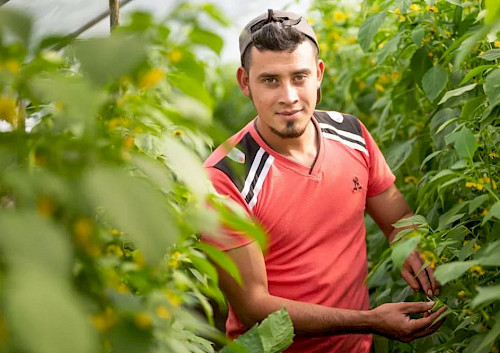 It took him two-and-a-half years to pay off that loan, with interest. I was afraid to ask what interest rate he was charged but can safely assume it wasn’t prime. After three years in the U.S., working two jobs for 80 hours a week, he decided to return to El Salvador with little to show for it. Others shared similar stories that highlighted the difficulties they faced in a strange land where they didn’t speak the language, were often mistreated and constantly living in fear, not to mention, missing their families.
It took him two-and-a-half years to pay off that loan, with interest. I was afraid to ask what interest rate he was charged but can safely assume it wasn’t prime. After three years in the U.S., working two jobs for 80 hours a week, he decided to return to El Salvador with little to show for it. Others shared similar stories that highlighted the difficulties they faced in a strange land where they didn’t speak the language, were often mistreated and constantly living in fear, not to mention, missing their families.
Through my conversations with these young men, I became aware of a simple fact. If proper paying work were available in El Salvador, they would have no desire to migrate north. One young man named Arnoldo who had tried to enter the U.S. but was caught and after months of detention deported home, told us that since he became part of the Acceso farmer network, he is earning $600 a month — enough to support his wife, son, and sister-in-law.
To get him started, we provided in-person training to grow crops that were aligned with market needs, credit for two years of start-up costs, which he repays from the sale of crops, support for the construction of his tomato greenhouse, and access to our EXTENSIO Ag Tech App which provides real-time information such as weather.
To give a sense of how little it costs us to set up a farmer for success, consider that since 2016, Acceso provided Arnoldo a total of $2,377 in inputs and credits and he has generated $98,000 in produce sales in that same period. Acceso’s cost per farmer works out to an average of $780 over a six-year period. And those monies are paid back to Acesso, making our approach to poverty alleviation a sustainable one.
And Arnoldo’s dream? To be able to grow his agriculture business such that he can offer his son an education, thereby ending the cycle of poverty. In our conversation, another young man named Hugo, scoffed at the idea of paying someone $7,500 to immigrate.
He decided to join our program in 2015 and with a total of $11,000 in inputs and credits, he has since grown his business. He now employs six others and wishes to continue to grow quickly and become an economic engine in his community employing others who might otherwise also be considering migrating. By injecting needed incomes into his community, he is creating a multiplier effect beyond his own.
It is this type of evidence that convinces us there is a solution to irregular immigration from this region. One can imagine the per-person costs (never mind the heartache and political costs) of attempting to control the flow of irregular migrants into the U.S. and the subsequent costs of deportation.
According to a University of Texas study, an estimated 407,000 people, on average, left the Northern Triangle region of Central America annually from 2018 to 2021, with the majority bound for the United States. Multilateral institutions such as USAID and private foundations should work together with local organizations to build the necessary infrastructure and support that will provide sustainable, long term economic opportunity through the kinds of agricultural investments mentioned above. We believe our initiative alone will improve the incomes of 40,000 likely migrants from the region at a fraction of the costs of what is currently spent on border controls.
Let’s invest in their future and give people reasons to stay in their home communities which is what they truly want, instead of wasting money on methods that simply don’t work.



